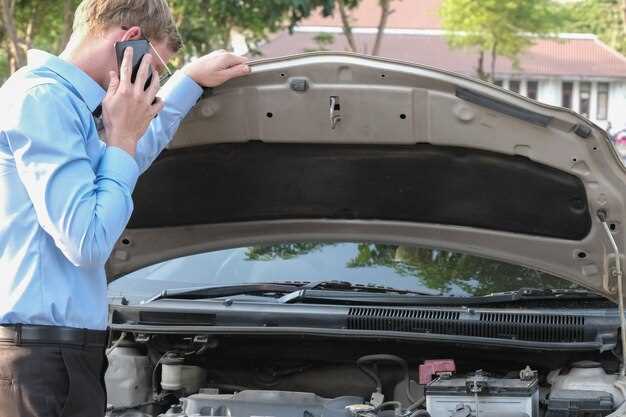
Fixing a Leaking Audi Sunroof

Owning an Audi is a proud experience for many car enthusiasts, but like any vehicle, it can encounter issues over time. One common problem that Audi owners may face is a leak in the sunroof. This issue not only affects the comfort of your ride but can also lead to more severe damage if not addressed promptly. In this guide, we will provide you with a comprehensive step-by-step approach to effectively diagnose and repair your Audi sunroof leak.
The sunroof is a feature that enhances the driving experience, allowing natural light and fresh air to enter the cabin. However, when it starts to leak, it can create discomfort and even damage the interior of your car. Identifying the source of a leak is crucial, as it could stem from clogged drainage tubes, rubber gasket deterioration, or even misalignment of the sunroof itself. Understanding these potential causes will help you tackle the issue head-on.
In the following sections, we will break down the repair process into manageable steps. From examining the sunroof’s components to sealing any identified leaks, our guide will equip you with the knowledge needed to restore your Audi’s sunroof functionality. Follow along to ensure that your vehicle stays protected from the elements while you enjoy every drive.
Identifying the Source of the Sunroof Leak

To properly address a sunroof leak in your Audi, the first step is to accurately identify the source of the problem. Leaks can originate from several areas, making it essential to perform a thorough inspection. Begin by examining the sunroof seals, as worn or damaged weather stripping can allow water to enter the vehicle.
Next, check the drainage system. Audi sunroofs are designed with drainage tubes that channel water away from the sunroof area. Make sure these tubes are not clogged or kinked, as obstructions can lead to excess water pooling and subsequent leaks into the cabin.
Inspect the sunroof frame for cracks or other signs of damage. Any imperfection in the frame can compromise its integrity and lead to leaks. Additionally, evaluate the alignment of the sunroof itself; if it does not sit properly, it may not create a waterproof seal when closed.
Finally, perform a water test by pouring a small amount of water over the sunroof while observing for any signs of leakage into the cabin. This method can help confirm the exact location of the leak, allowing for more targeted repairs.
Step-by-Step Process to Clean and Maintain Sunroof Drains
To ensure the optimal performance of your Audi sunroof, regular cleaning and maintenance of the sunroof drains are essential. Clogged drains can lead to leaks, which may damage the interior of your vehicle. Follow these steps to effectively clean and maintain the sunroof drains.
First, gather the necessary tools for the task. You will need a soft brush, a vacuum cleaner with a nozzle attachment, a soft cloth, and a cleaning solution specifically designed for automotive use.
Start by opening the sunroof completely. This will provide you with access to the drains and make the cleaning process easier. Locate the drain holes, usually found at the four corners of the sunroof frame.
Next, using the soft brush, gently clear away any debris or dirt around the drain holes. Be careful not to scratch any surfaces. This step helps to prevent blockages that can impede water flow.
Once the area is clear, take the vacuum cleaner with the nozzle attachment and carefully vacuum the drain holes. This will remove any accumulated dirt or leaves that might be causing a blockage.
After vacuuming, it’s important to check the drainage system. Pour a small amount of water into each drain hole and observe if it flows freely. If the water does not drain, the pipes may be obstructed.
In the case of a blockage, use a long, flexible brush or a cleaning wire to gently push through the drain pipes. Ensure not to exert too much force, as this can damage the drainage system.
Once the drains are clear, use a soft cloth to wipe down any excess water and ensure that the area around the sunroof is dry. This helps prevent mildew and odors from developing.
Finally, perform this cleaning process regularly, ideally every few months, or whenever you notice water pooling on the interior when it rains. Keeping the drains clear will contribute significantly to the longevity of your Audi sunroof and its components.
Repairing Damaged Seals and Components in Your Audi Sunroof

The sunroof in your Audi is a great feature, but over time, issues such as leaks can arise due to damaged seals and components. This guide will help you address these problems effectively.
First, inspect the sunroof seals for any signs of wear and tear. Look for cracks, breaks, or tears in the rubber. If any damage is found, it’s crucial to replace these seals to prevent water ingress. You can usually purchase OEM (Original Equipment Manufacturer) replacement seals that fit your Audi model perfectly.
Next, examine the sunroof drainage tubes. Clogs in these tubes can lead to water pooling in the sunroof area. To clear the drains, use a flexible wire or compressed air. Ensure that the drains are free-flowing by pouring a small amount of water into the sunroof frame; it should exit through the drains.
If further inspection reveals that the sunroof frame or the motor components are damaged, these parts will need to be replaced. Remove the sunroof assembly by detaching it from the tracks, then carefully disassemble the motor mechanism. It’s advised to refer to your Audi’s service manual for specific removal instructions.
After replacing damaged components, reassemble the sunroof and test its functionality. Make sure it opens, closes, and tilts properly without any obstruction. To ensure longevity, periodically check the seals and drainage system of your Audi sunroof to maintain their integrity.
By following these steps, you can effectively repair damaged seals and components, restoring the functionality of your Audi sunroof and preventing leaks.